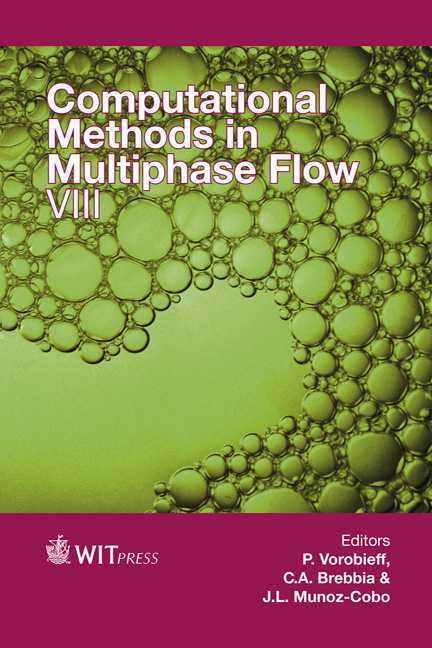Modelling Effects Of Particle Size And Pipe Gradient On Sand Transport In Multiphase Pipes
Price
Free (open access)
Transaction
Volume
89
Pages
12
Page Range
323 - 334
Published
2015
Size
652 kb
Paper DOI
10.2495/MPF150281
Copyright
WIT Press
Author(s)
R. Tebowei, M. Hossain, G. Oluyemi, S. Islam
Abstract
Multiphase flow is important in many industrial processes such as sand transport in multiphase pipeline during petroleum production process. The interactions of sand and liquid exhibit complex flow characteristics including undesired deposition of sand in pipe. This study presents a three-dimensional (3D) computational fluid dynamics (CFD) modelling of horizontal and V-inclined multiphase pipe flow of liquid and sand for predicting sand transport flow regimes and minimum sand transport velocity (MTV) using the two-fluid Eulerian–granular modelling approach. This work presents precisely selected closure models which account for stresses due to kinetic and collisional inter-particle interactions based on the kinetic theory of granular flow and frictional stress due to inter-particle interaction in stationary sand bed regime by the addition of solid friction pressure models. The simulations were performed for particle size ranging from 38 to 255 μm and 0.1 m diameter horizontal and V-inclined pipes in order to investigate the effect of particle size and pipe gradient on sand transport. The present study shows that particle size and pipe gradient have significant effect on liquid turbulence intensity and sand concentration distribution in pipeline. The predicted results show sand accumulates in the dip of the V-pipe which increases with increase in pipe gradient. The sand deposition varies in the V-pipe due to the pipe orientation, with a lower deposition at the pipe outlet when compared with the horizontal pipe flow at the same flow velocity and particle size. The predicted results show good agreement with experimental data obtained from literature for horizontal pipe flow.
Keywords
Eulerian–granular model, sand transport flow regime, deposition velocity, turbulence intensity, particle size, sand concentration, V-inclined pipe, pipe dip, stationary sand bed





